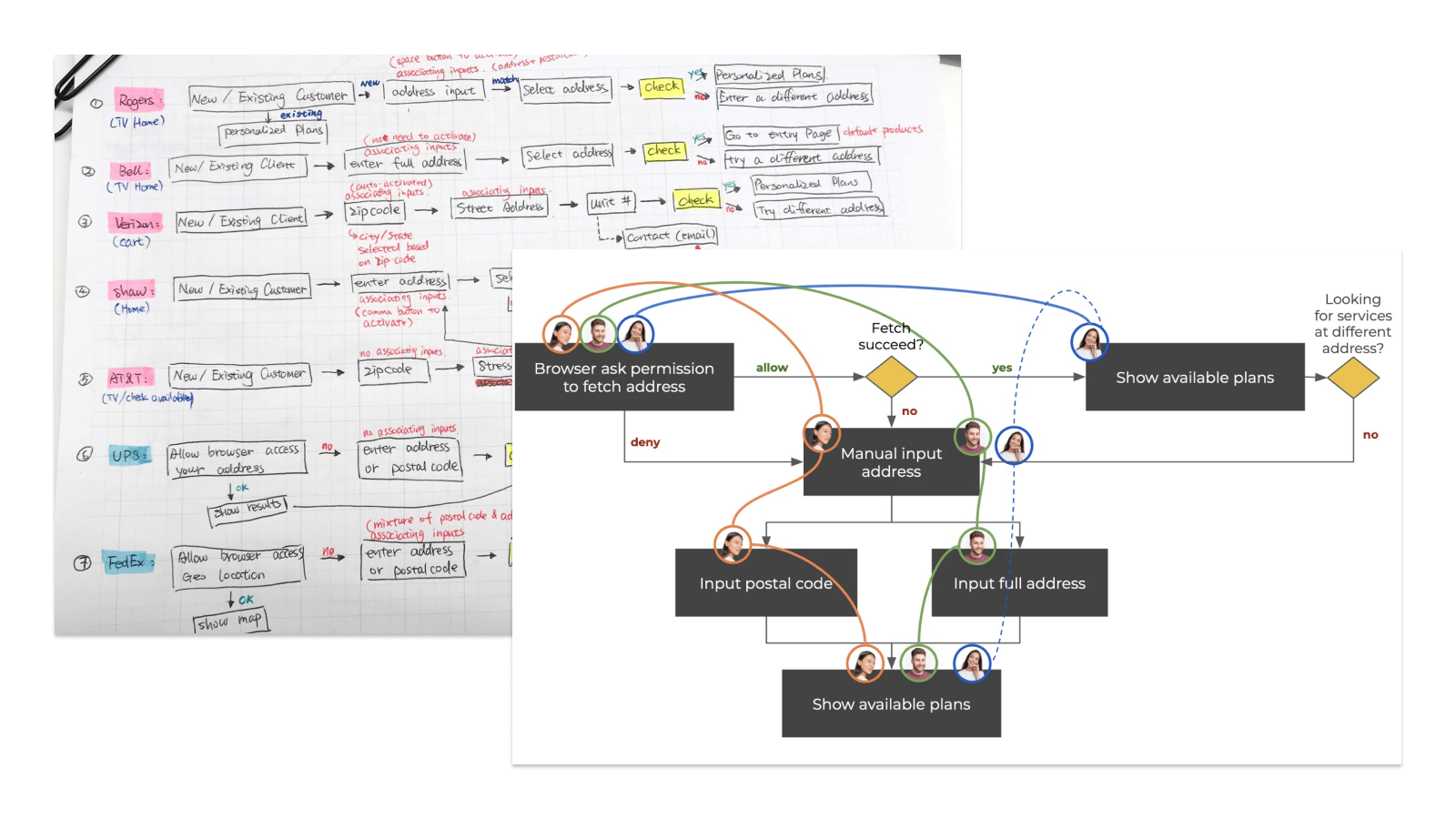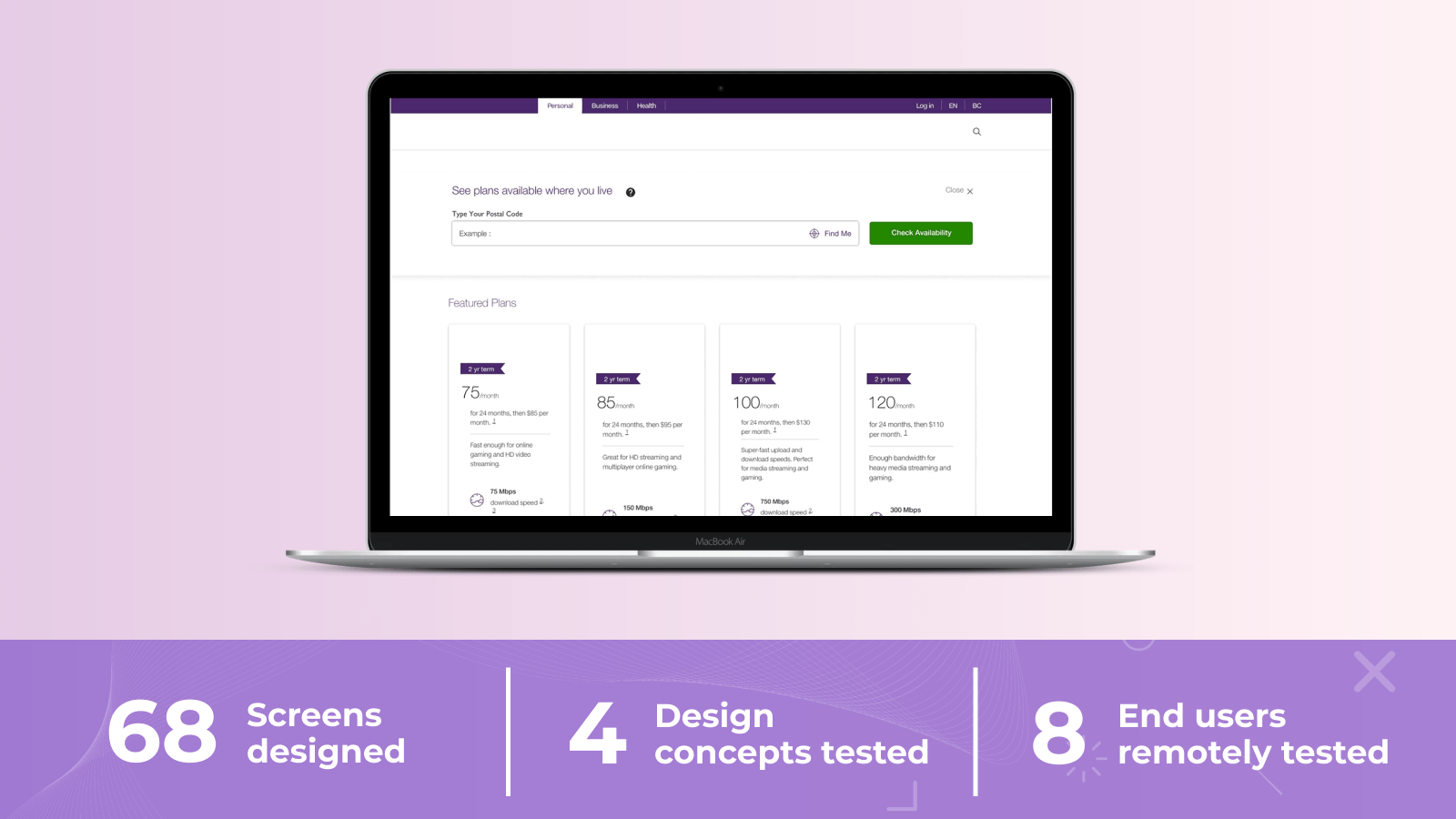
Challenges
Frictionless customer experience is crucial for conversion in the eCommerce funnel, no matter the industry or vertical. However, telcos face a unique challenge of requiring customers to enter their service addresses in order to show eligible plans that vary or are determined by geographic location. Our client, one of the largest digital service providers in Canada was no exception.
Approach
Despite being a critical step to provide their home solution offerings, our client was facing a major drop in traffic during the service eligibility check and turned to us to design a solution to improve the customer experience while enhancing the overall browse-buy journey.

The People: 1 Business System Analyst, 1 Design Lead, and 1 Designer.
Problem Framing: The first step was to determine we were solving the right problems. Keeping the focus on the user, we conducted a series of problem-framing workshops in order to determine exactly why customers were dropping off at this point in the journey. We found:

Customer Privacy Concerns.
Customers can often be reluctant to disclose their complete address in this stage of their journey.
Address Check Failures.
System couldn’t auto-correct invalid addresses that customers may have accidentally entered, showing inaccurate results.
Verification Takes Too Long.
Addresses stored in backend databases lacked standardization, causing search failures and latency up to 26 seconds due to multiple queries in succession.
Personas & Market Research: After analyzing several eCommerce experiences with an address input required in order to determine best practices around customer privacy, we discovered that several journeys started at the postal code and gradually asked for more information (progressive disclosure). We further found that user attitudes changed significantly when the ask was framed in the right context using appropriate UX copy and patterns. We also discovered that there is a tradeoff between Privacy & Security vs. Convenience & Accuracy for different customers.

Lin: More concerned about privacy than process. Jessy: Prefers accuracy through auto-complete. Will: Checking eligibility from a different location.
User Journey Mapping: In order to accommodate different user personas, we mapped out a flow diagram of their journey to help balance their competing privacy and convenience needs. This went on to serve as a guide for customer outcome discussions moving forward and allowed us to evaluate technology solutions against the customer outcomes

Concept Ideation: In response to our findings, we developed a hybrid solution to address different customer needs that included automatic location via the browser, redesigned address acquisition journey starting with postal code, and postal code progressive disclosure for convenience and input accuracy.

The result was three design concepts, Banner, Modal, and Enhanced Existing Layout, all with different experiences.
Validation with Real Users: After defining test scenarios for recruitment and establishing remote testing channels, we began conducting tests with real users to compare the usability of our three concepts. We learned that:
- Most people feel more comfortable entering a postal code over their full address
- You can avoid price plan shock by incentivizing users for entering location information
- Modal design made users feel it was a “custom experience”

68 Screens designed, 4 Design concepts tested and 8 End users remotely tested.
Success/Impact
Working with client teams, we developed a Proof-of-Concept (POC) to validate our concepts from the user experience and technology dimension. As a result, our solution demonstrated and was able to prove:
- We can simplify the service eligibility for users by automatically detecting location from the browser (based on consent) and removing friction in entering address through auto-complete feature
- Address privacy concerns by allowing users to only share partial address e.g postal code only
- Improvements in user experience and customer conversion rate by reducing latency through standardized databases and deploying flexible (microservice) architecture



